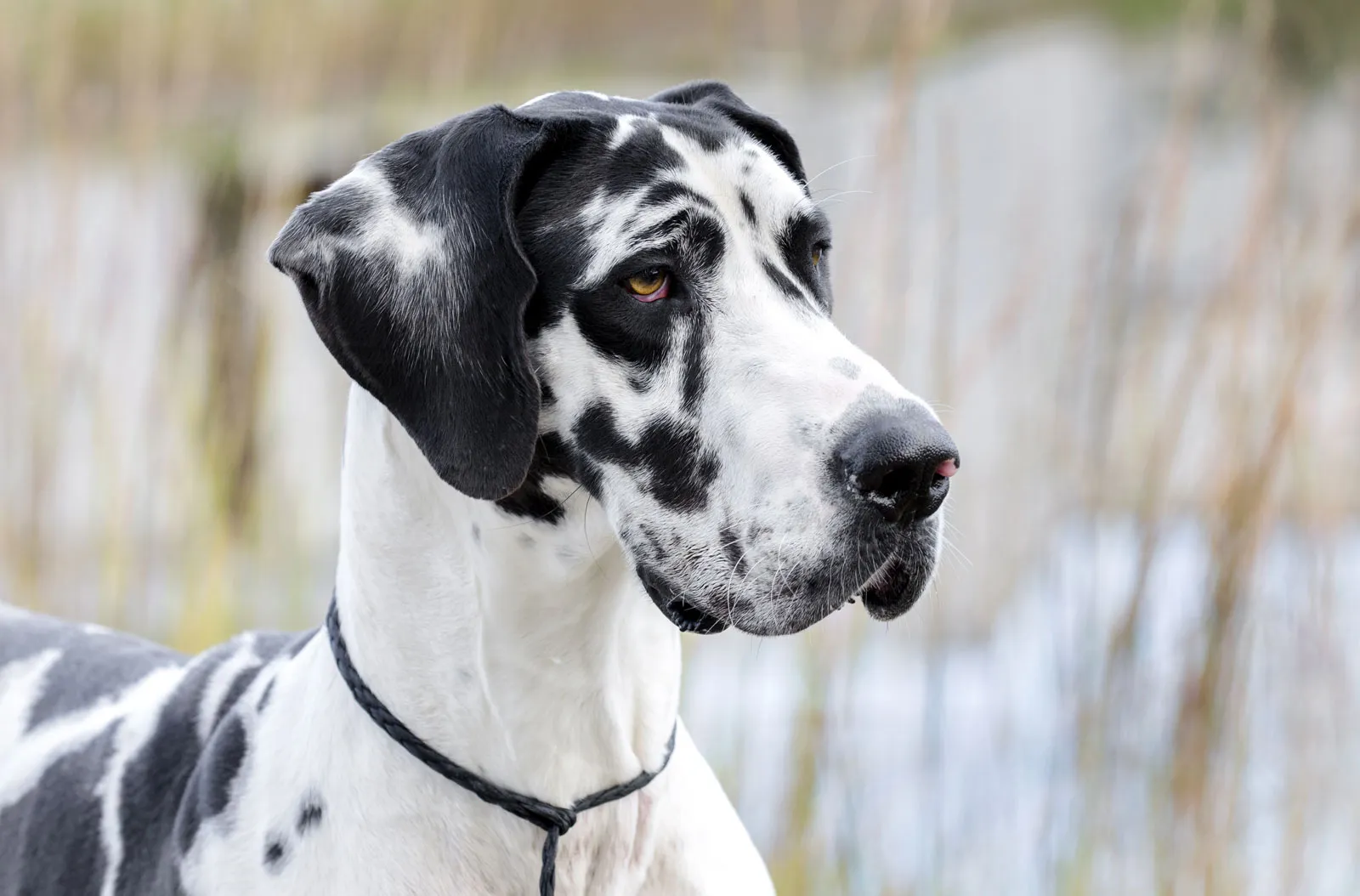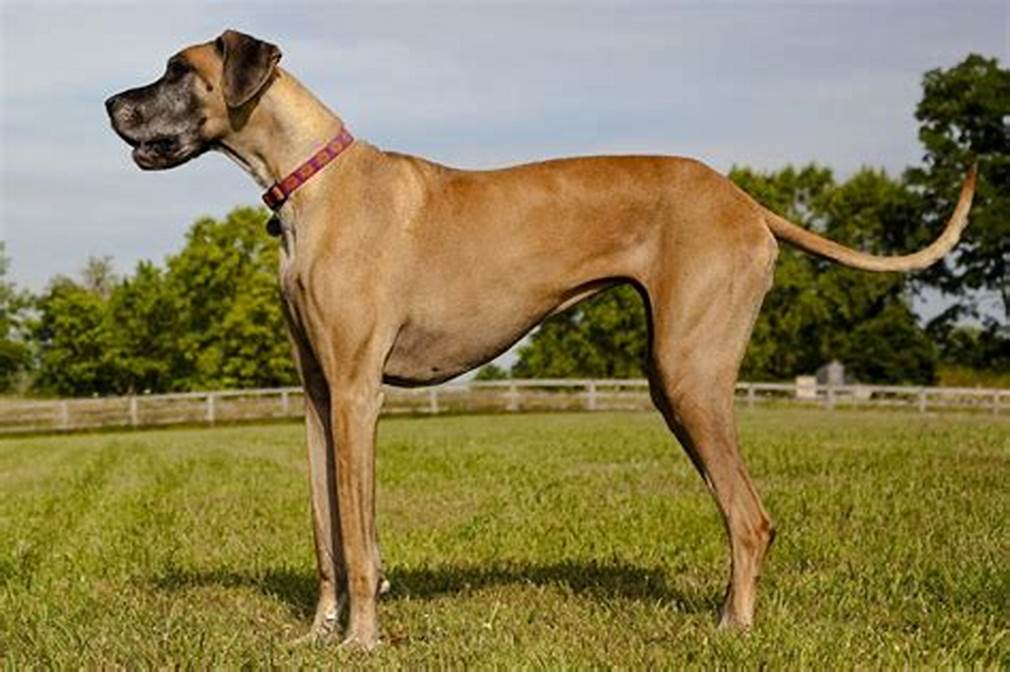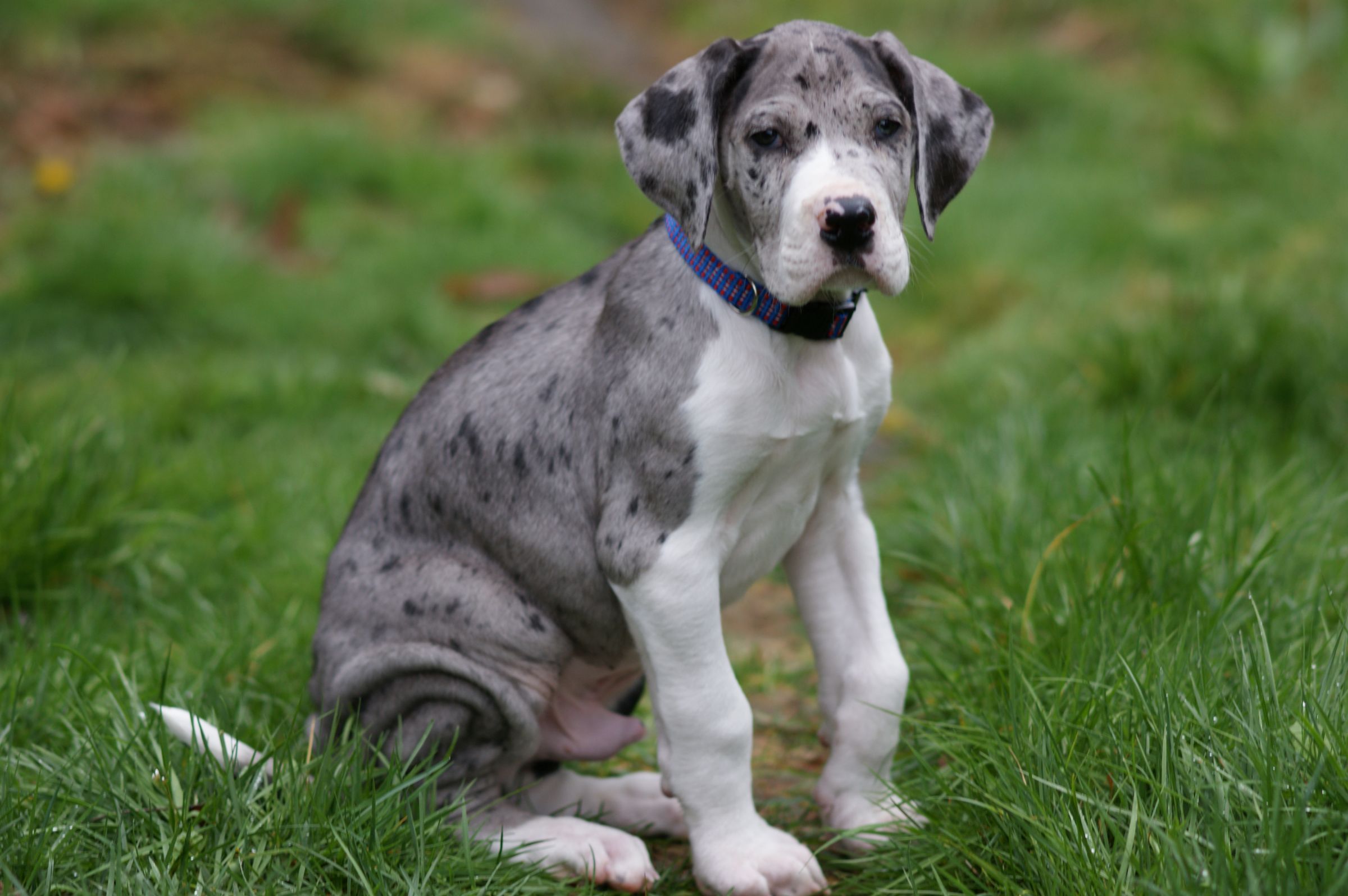
Despite its name, the Great Dane is not Danish in origin but rather developed in Germany as a powerful hunting and guard dog. Known in Germany as the Deutsche Dogge, the breed was used for boar hunting in the Middle Ages. These dogs were selectively bred from Mastiff-type dogs and Irish Wolfhounds, resulting in a breed with strength, size, and agility.
As boar hunting declined, the Great Dane evolved into a noble companion dog, often kept in aristocratic homes as a symbol of power and elegance. It was recognized by the American Kennel Club (AKC) in 1887 and today stands as one of the most iconic and impressively large dog breeds in the world.
The Great Dane is consistently admired for its grandeur, affection, and calm demeanor. It is especially popular with families and individuals who want a dog that’s gentle yet imposing. Despite its large size, the breed is surprisingly laid-back and loving, earning it the nickname “gentle giant.”
The Great Dane is an extra-large, muscular dog with an elegant, commanding presence and smooth, graceful movement.
• Coat: Short, sleek, and close-fitting.
• Color:
o Common colors include fawn, brindle, black, blue, harlequin (white with black patches), and mantle (black and white).
• Size:
o Height: 28–34 inches (71–86 cm)
o Weight: 100–200+ lbs (45–91 kg)
• Head & Expression: Long, rectangular head with a regal expression and deep-set, intelligent eyes.
• Ears: Can be cropped or natural (floppy and triangular).
• Tail: Long and tapering, carried straight or slightly curved.
• Body: Balanced, deep-chested, and powerful—built for strength and dignity.
Despite their size, Great Danes are known for their gentle, affectionate personalities and calm behavior indoors.
• Gentle and Friendly: Naturally sweet and devoted to their families.
• Affectionate and Loyal: Craves human interaction—a true “velcro dog.”
• Protective but Not Aggressive: Will alert and defend if necessary but is usually even-tempered and polite.
• Patient with Children: Excellent with respectful kids due to their calm and tolerant nature.
• Moderate Energy: Enjoys playtime and walks but is generally laid-back indoors.

If you’re looking for a majestic, affectionate, and family-oriented dog, the Great Dane is a wonderful option.
• A Gentle Soul: Despite its size, it’s loving, sensitive, and eager to please.
• Striking Appearance: Tall and graceful, a Great Dane draws attention everywhere it goes.
• Good House Manners: Calm demeanor makes them suitable for indoor life.
• Protective Instincts: Can serve as an imposing deterrent without aggressive behavior.
• Loyal Companion: Bonds deeply and thrives on human companionship.
Due to their size, Great Danes need specialized care to ensure a healthy, happy life.
• Training:
o Start early—a well-trained Dane is a joy, an untrained one can be a challenge.
o Use positive reinforcement—they are sensitive to harsh correction.
• Exercise:
o Moderate exercise—daily walks and play, avoiding strenuous activity while growing.
o Puppies need careful exercise management to protect joints.
• Grooming:
o Easy coat care—weekly brushing and occasional baths.
o Clean ears, trim nails, and brush teeth regularly.
• Nutrition:
o Feed a large-breed puppy formula when young, transitioning to adult large-breed food.
o Avoid overfeeding—weight management is critical.
• Companionship:
o Needs human closeness—not suited to isolation or outdoor-only living.

The Great Dane, like many giant breeds, is shorter-lived, with an average lifespan of 7–10 years. Common health concerns include:
• Bloat (gastric torsion) – life-threatening, and preventive surgery (gastropexy) is often recommended
• Hip Dysplasia
• Cardiomyopathy (heart disease)
• Joint Disorders (especially in puppies)
• Bone Cancer (osteosarcoma)
Routine vet care and working with responsible breeders can reduce risks.
Compared to the Mastiff, the Great Dane is more agile and graceful, with a more refined appearance. It is gentler and more sociable than the Cane Corso, and less independent than the Irish Wolfhound, while maintaining a loving and even temperament.
The Great Dane is best for those who can accommodate its size, offer daily companionship, and appreciate its gentle spirit and majestic presence. They do well in homes with space, though they adapt surprisingly well to apartments if exercised properly.
Not ideal for people who are frequently away from home or unprepared for the responsibilities of a giant-breed dog.
United Pet Club provides support for Great Dane care, training, and finding reputable breeders. Let us help you discover the joy of living with this affectionate and awe-inspiring gentle giant.